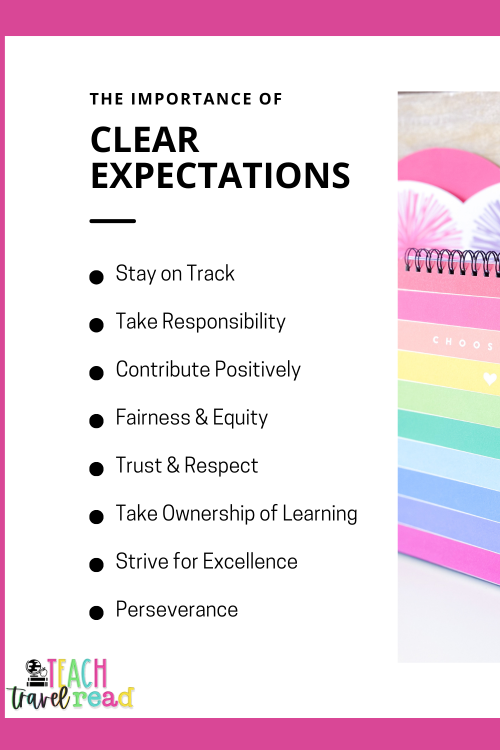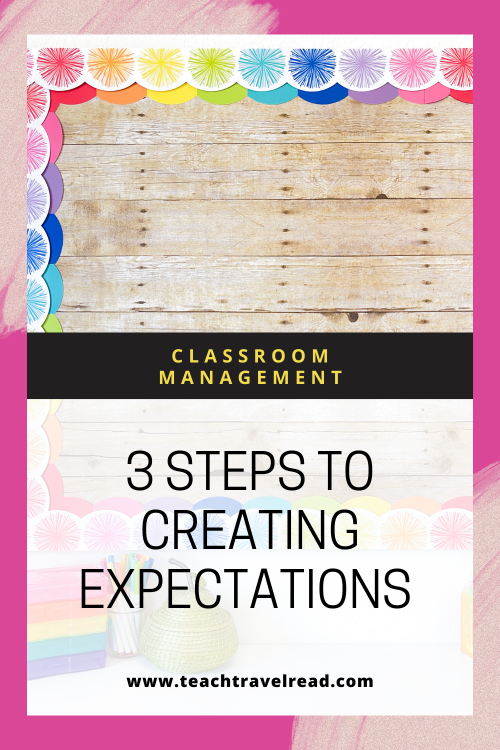Thank you for joining me today!
Love this journey for you,
April


Welcome back, teachers! In my last blog post, I discussed the first step of effective classroom management: building positive relationships with students. I shared strategies for fostering connections, creating a sense of belonging, and laying the groundwork for a supportive learning community. Now, as we continue our journey toward a successful school year, it’s time to turn our attention to the next vital component: establishing clear expectations and rules.
Just as a house needs a solid foundation, a classroom requires clear rules to maintain order and respect. Setting expectations and rules provides structure and empowers students to take ownership of their behavior and responsibilities. In this post, we’ll explore how to develop a set of clear, concise rules, communicate expectations effectively, involve students in the rule-making process, and consistently enforce rules to create a positive and productive learning environment.
But before we dive into these strategies, let’s take a moment to reflect on the importance of laying the groundwork for effective classroom management. Building positive relationships with students sets the stage for success by establishing trust, fostering cooperation, and creating a supportive community where all students feel valued and respected. Referring to our previous blog post, we reinforce the idea that effective classroom management begins with building connections and nurturing relationships with our students.
So, grab your cup of coffee, and let’s continue our journey toward creating classrooms where every student can thrive!

Establishing clear expectations is the cornerstone of effective classroom management. As a map guides travelers, clear expectations guide students toward behavior and academic success. When students know what is expected of them, they are more likely to stay on track, take responsibility for their actions, and contribute positively to the learning environment.
Clear expectations also promote a sense of fairness and equity in the classroom. All students understand acceptable behavior when rules and guidelines are transparent and consistently enforced. This creates a sense of trust and respect between teachers and students, creating a supportive learning community where everyone feels valued and respected.
Also, clear expectations empower students to take ownership of their learning. By clearly outlining academic goals and behavioral standards, teachers set a high bar for student achievement and provide students with the tools they need to succeed. When students understand what is expected of them, they are more likely to set SMART goals, strive for excellence, and persevere in facing challenges.
First things first – let’s talk rules. When it comes to creating classroom rules, less is often more. Aim for a concise list of rules that cover the most critical parts of behavior and conduct in your classroom. Keep them simple and easy to understand, using clear and age-appropriate language for your students. Remember, your rules should reflect your values as a teacher and promote a safe and respectful learning environment. Does your school already have a set of rules to follow? Perfect! Use those to guide your first days of school.
Here’s a pro tip: involve your students in the rule-making process! This empowers them to take ownership of their behavior and ensures that the rules are relevant and meaningful to their daily experiences in the classroom. Consider holding a brainstorming session (or morning meeting) where students can share their ideas for rules or have them vote on which rules they believe are most important. You establish a sense of community and cooperation from day one by including students in this process.
Once you’ve established your classroom rules, you must clearly communicate them to your students. Take the time to discuss each rule with your class, explaining the reasoning behind it and the consequences of not following it. Use visual aids such as posters or handouts to reinforce the rules visually, and consider creating a class constitution where students can sign their agreement to abide by the rules.
Consistency is vital when enforcing rules, so review them regularly and remind students of their expectations throughout the school year. Consider incorporating role-playing or real-life scenarios to help students understand how the rules apply in different situations. And don’t forget to model positive behavior yourself – your actions speak louder than words!
Finally, let’s talk about enforcement. Establishing rules is one thing, but following through on consequences is where the rubber meets the road. Be firm but fair when enforcing rules and consistently apply consequences to all students. Consequences should be logical and developmentally appropriate, focusing on teaching rather than punishment.
It’s also essential to provide students with opportunities for redemption. Encourage reflection and problem-solving when rules are broken, and work together with students to devise solutions to prevent similar incidents in the future. Remember, our goal as teachers is to correct behavior and help students learn and grow from their mistakes.

Setting clear expectations and rules is the foundation for a successful school year. By developing a set of clear, concise rules, communicating expectations to students, involving them in the rule-making process, and consistently enforcing rules, you can create a positive and productive learning environment where all students can thrive. So, here’s to a fantastic year ahead—let’s make it one to remember!
What are some of your favorite strategies for establishing classroom rules? Share your tips and tricks in the comments below!